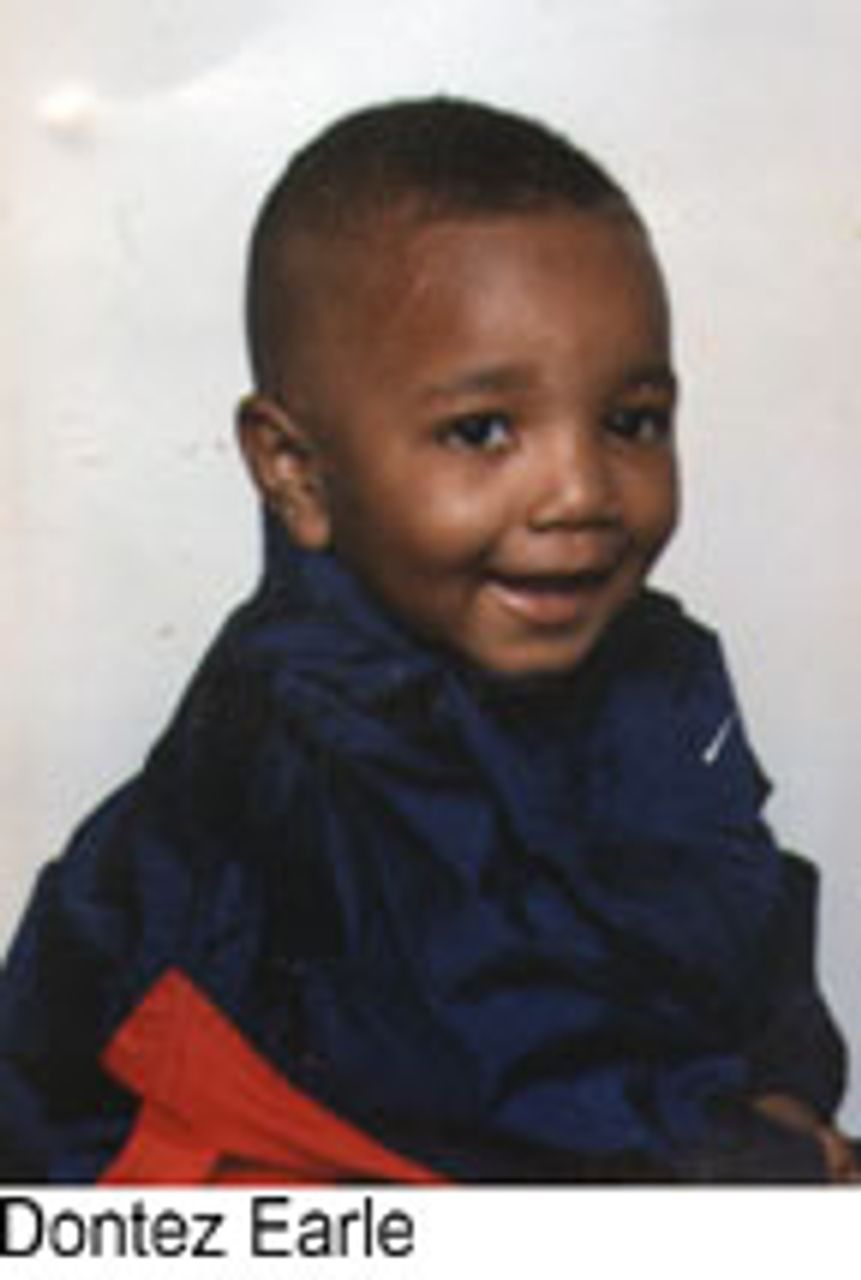The ability of the Detroit Fire Department to adequately fight fires and save the lives of its citizens has become a major concern for residents in Detroit, an anxiety produced by years of budget cuts by city officials.
 On Thursday, December 10, at 10:50 a.m., a house fire erupted in a poor east side Detroit neighborhood, on the 20300 block of Albany Street, taking the life of three-year-old Dontez Earle. Investigators believe the fire was caused by children playing with matches. According to family members two other children were in the upstairs bedroom with Dontez when the fire broke out but escaped without injury after being rescued by their mother. At least nine family members living in the home at the time, involving three generations, were made destitute by the fire.
On Thursday, December 10, at 10:50 a.m., a house fire erupted in a poor east side Detroit neighborhood, on the 20300 block of Albany Street, taking the life of three-year-old Dontez Earle. Investigators believe the fire was caused by children playing with matches. According to family members two other children were in the upstairs bedroom with Dontez when the fire broke out but escaped without injury after being rescued by their mother. At least nine family members living in the home at the time, involving three generations, were made destitute by the fire.
Three hours earlier, at 8:00 a.m., Detroit Fire Department officials, responding to budget restraints and a manpower shortage, idled the ladder truck in the neighborhood fire station that would have normally responded to the fire. In its place a truck from a station three miles away was called to the blaze.
Neighbors said several people, including two auto workers from the nearby Mound Road Chrysler Engine plant, desperately tried to save the child when they heard the family members scream for help. Others reported that family members tried to water down the intense fire with a garden hose, hoping to clear a way to rescue the child.
Normally an engine and ladder truck housed in the same fire station travel together to fight a fire. When the engine truck from the nearby station arrived before the ladder truck, a practice that has become increasingly familiar, several residents complained that it took a long time for the ladder truck to reach the scene, an issue disputed by Detroit Fire Commissioner James Bush.
More than a dozen children have died from house fires in Detroit this year, and with the cold weather only now beginning to set in, the death rate is expected to rise. Already fire related deaths for the year are approaching 70, a 68 percent increase since 1996. Detroit consists predominately of single family homes built during the 1940s and '50s. The aging dwellings in many neighborhoods, combined with the inability of families to pay for needed repairs, have made many homes literally fuel for fire. As a consequence, fires, once they start, become immediately a matter of life or death, especially in poor working class neighborhoods.
Cuts in the Detroit Fire Department
City officials said they deactivated Ladder 30, along with four other ladder trucks, in response to a restraining order obtained by the firefighters union, Detroit Fire Fighters Association Local 344, demanding that city officials abide by the union contract requiring four firefighters on a truck. The union said it has issued numerous complaints, ultimately taking the city to court, that the city regularly sends out two- and three-man crews to fires, in violation of its contract. According to the union Detroit uses only one firefighter on its apparatuses, while other cities--such as Pittsburgh, Cincinnati, San Diego, Boston and Cleveland--use a minimum of two or three.
The firefighters union, presently in contract negotiations with the city, has made an issue of inadequate staffing in the fire department, a practice they believe has placed both Detroit citizens' and firefighters' lives in jeopardy. A leaflet the union issued states that the city is understaffed by 100 firefighters. The manpower shortage, according to the union, has resulted in the injury of 90 firemen presently on sick leave due to injuries from forced overtime and work overload.
Faulty, aging equipment has become commonplace in the Detroit fire fleet believed by some to be over 30 years old. Several official complaints filed by the firefighters union to the Michigan Industrial Occupational Safety Administration, the state government's safety oversight board, forced the city to take several fire trucks out of commission because they were unsuited for use.
A number of firefighters have said that thousands of Detroit fire hydrants simply do not work, placing Detroit residents' and firefighters' lives at risk. One example is the fire last month where two firefighters heroically attempted to rescue an eight-year-old boy in a house fire caused by an overturned candle. Candles were the only source of light for the family following the shut-off of electricity to the home by the local electric utility company. While the two rescue firefighters were inside the house attempting to save the child, other firefighters outside were attempting to find a working hydrant. The two rescue firefighters became trapped inside the burning building, blocked by bars on the windows, and barely managed to escape by climbing out of a window in the basement. A working hydrant, a block away, was not located until after they had escaped the building. The child died before firefighters could reach him.
All of the five ladder trucks deactivated on December 10 were located in impoverished Detroit neighborhoods. The day following the death of three-year-old Dontez Earle, the five ladder trucks were reactivated by a court ruling without explanation.
Disinterest in the plight of Detroit workers
The disdainful attitude by city officials towards fire protection services in Detroit follows years of cuts in essential social services. During the last 20 years Detroit has suffered the devastating loss of more than 100,000 manufacturing jobs, a result of downsizing by the three major US auto manufacturers--Chrysler, Ford and General Motors. With the manufacturing jobs Detroit also lost half of its residential population of 2.2 million people, leaving behind large sections of workers who have been driven into poverty. During the 1980s and '90s hundreds of millions of dollars were cut from city services by the former mayor, Democrat Coleman Young, reaching its apex in 1993-94, when $150 million was cut from city services. Funding for education, housing, rubbish disposal, libraries, as well as fire protection never recovered. The cost-cutting in the fire department alone resulted in the closure of 21 fire stations and the elimination of over 500 firefighters' jobs.
The current administration of Democratic Mayor Dennis Archer, a close friend of US President Bill Clinton, has accelerated the crisis confronting Detroit residents by providing hundreds of millions of the city's tax dollars to big business while city services deteriorate. Detroit government officials are underwriting the construction of three new casinos in its downtown area, one owned by MGM Grand in Las Vegas. In addition to the casinos, Detroit officials are providing public money for two new sports stadiums to replace existing facilities. Both sports teams are owned by billionaires: the baseball team and stadium owned by Michael Ilitch, owner of Little Caesar's Pizza, and the football team and stadium owned by the Ford Motor Company family. The new stadiums will include luxury box seating selling for $50,000 to $250,000 per season.
Other plans of the administration to attract corporations to Detroit are to cut the city's income tax and privatize city services. Municipal income taxes generated $368 million in 1998, 15 percent of the city's $2.46 billion budget. It is well known that if the city cuts its tax base, city officials would have to cut more services.
 Neighbors of the Earle family were extremely upset about the death of the young boy and the state of the fire department. Betty Scott, who lives two houses from the fire, said, 'You know I heard two more children died in fires today. That's three kids today in fires. They need more firemen to work. When are they going to get more people? These fires are something else. I have a little six-year-old grandchild that I take care of and if anything were to happen to him I don't know what I would do.'
Neighbors of the Earle family were extremely upset about the death of the young boy and the state of the fire department. Betty Scott, who lives two houses from the fire, said, 'You know I heard two more children died in fires today. That's three kids today in fires. They need more firemen to work. When are they going to get more people? These fires are something else. I have a little six-year-old grandchild that I take care of and if anything were to happen to him I don't know what I would do.'
 Thelma Randall, another neighbor, had similar sentiments. 'It's understandable that the firefighters should demand more men. I support the firemen. These things aren't planned. It's a terrible shame that that boy died. People tried everything they could to save that boy. But you can't do very much when there aren't enough firemen.'`
Thelma Randall, another neighbor, had similar sentiments. 'It's understandable that the firefighters should demand more men. I support the firemen. These things aren't planned. It's a terrible shame that that boy died. People tried everything they could to save that boy. But you can't do very much when there aren't enough firemen.'`
A firefighter told the WSWS: 'It is terrible what is taking place with the fire department. Bush [the fire commissioner] is nothing but a lackey of Mayor Archer. We risk our lives every day, and we are glad to do it, but we need proper equipment. It's amazing how much of the material we have on these rigs that doesn't work.
'I can tell you they shut down these stations because they don't care. They think that people will not notice. The ladder company nearby could have been at that fire [on Albany Street] in one and a half minutes. Instead they called for a rig several miles away. Does it make a difference? You figure it out.'
When asked about the nonfunctional fire hydrants he said this was a common situation throughout the city. 'Look, I live in this city. My kids go to school here. I know of several fire hydrants, including some in front of our own fire stations, that have not been repaired for years. Thousands of hydrants all over the city are like that. We go out to tag them and report them, but nothing is done. All we are asking for is decent equipment; fix the hoses and the rigs so that we can do a good job.'
See Also:
Utility shutoff leads to child's death in Detroit house fire
[5 December 1998]
New York welfare policy claims an infant's life
[27 November 1998]
